What's New
How to Clean a Pistol: A Complete Guide Apr 22,2022
Cleaning a firearm on a regular basis is an issue of safety and will ensure that it functions properly.
Powder residue from shots and other filth can accumulate inside your gun's action or on the barrel over time. If this residue is not removed, it will have an adverse effect on the performance of your gun. It may become untrustworthy and even unpredictable.
Cleaning your pistol on a regular basis will also ensure that the safety systems are in working order. This is why, as previously said, cleaning your pistol can lessen the danger of it inadvertently discharging. you don't want your gun's safety to fail!
Gun owners are responsible for any damages caused by your gun if it is not properly maintained or used in a hazardous manner. As a result, it's always a good idea to keep up with your gun maintenance!
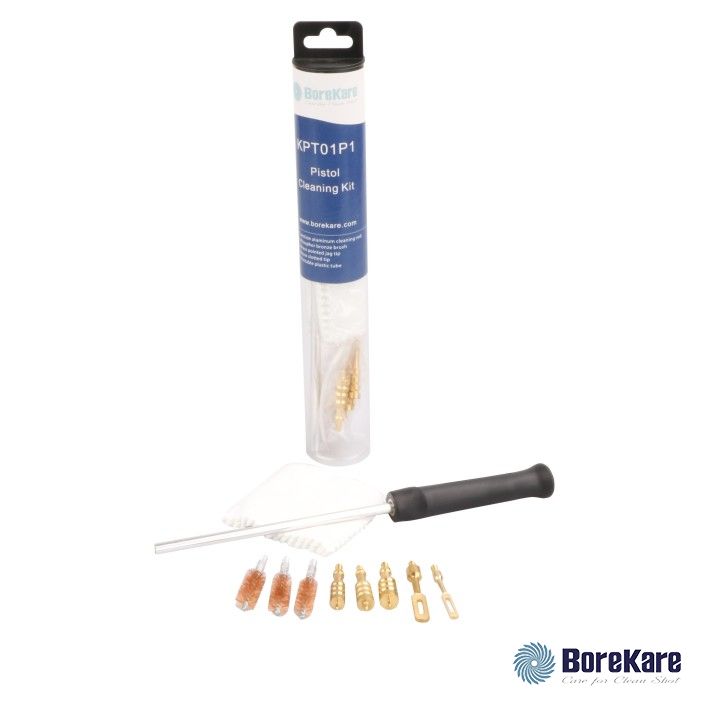
How Often Should You Clean Your Gun?
Handguns, rifles, and shotguns should all be cleaned on a regular basis.
Even if your gun hasn't seen any action, you should clean it thoroughly at least once a year. This is because it may still acquire dust or rust.
If your gun sees a lot of use, it will need to be cleaned more frequently. After each usage, try to clean it, especially if you've fired many shots. So, whether you've gone out hunting or just practiced at the shooting range, you should clean your rifle thoroughly.
What Are the Requirements for Cleaning a Gun?
Make sure you have all of the necessary supplies before cleaning your pistol. Different cleaning techniques are required for different guns, but having these essentials tools on hand will always come in handy:
A cleaning rod
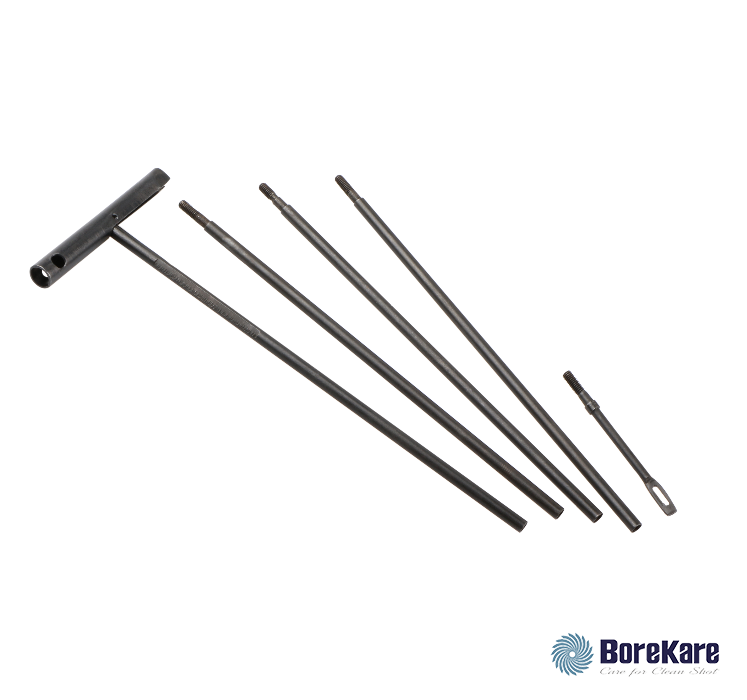
A caliber-specific bore brush
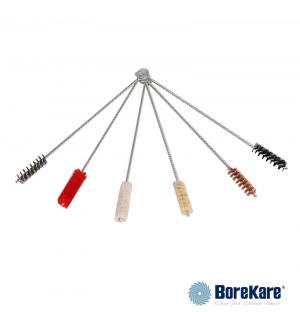
Caliber-specific, lint-free, and fiber-free cleaning patches
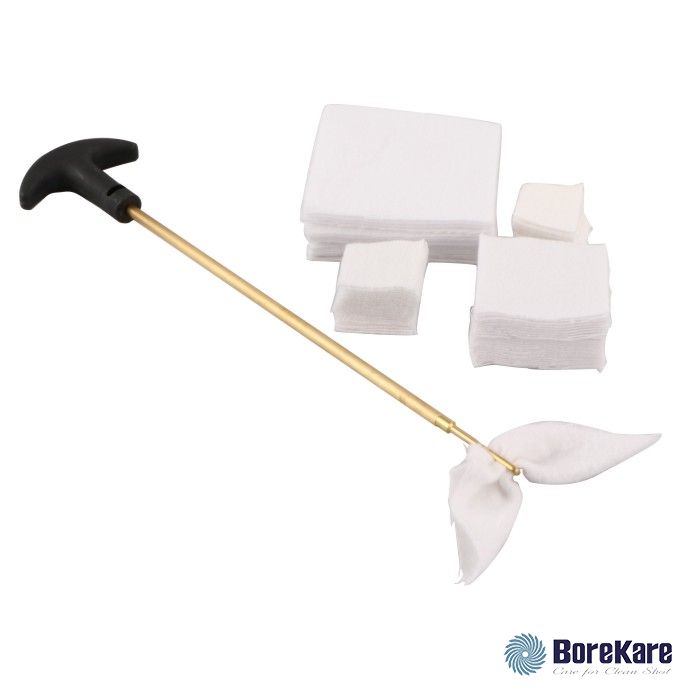
Forming-fitting and slotted cleaning jags
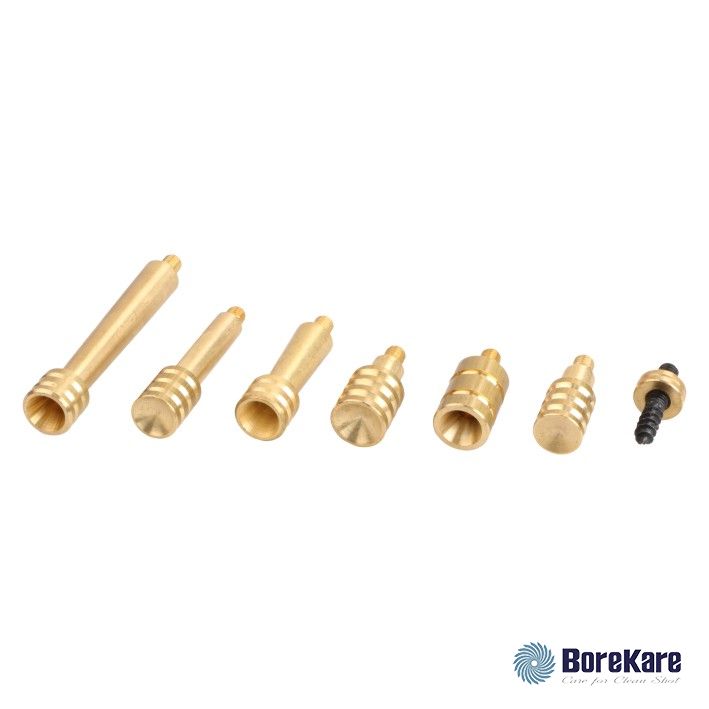
Utility brushes
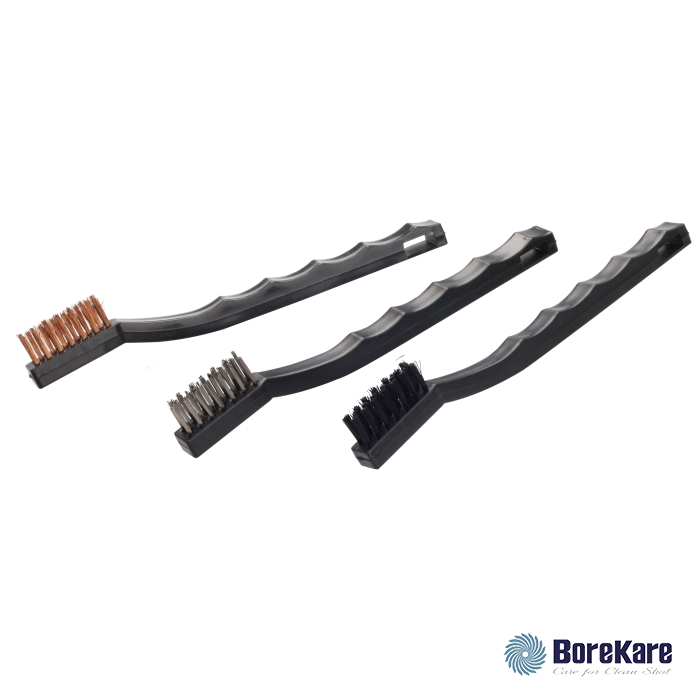
Double-ended brushes
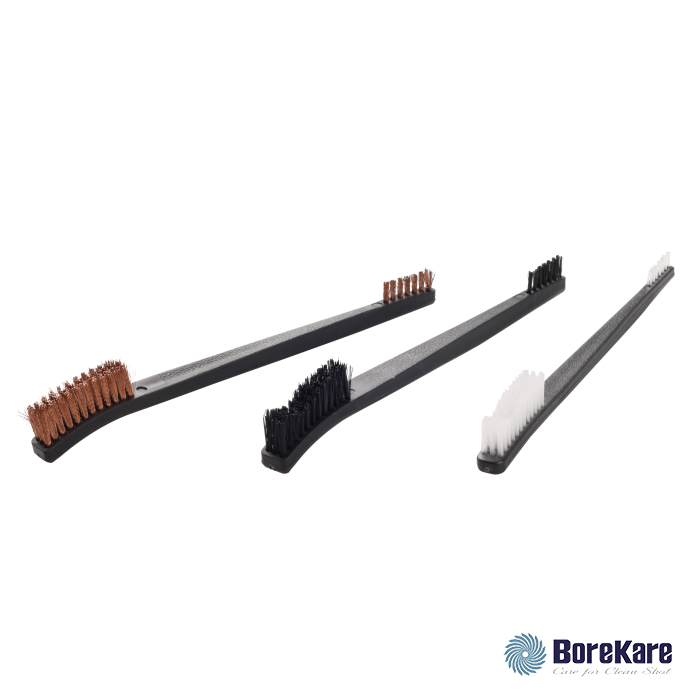
Preparing Your Cleaning Station
Because you want plenty of air around you while cleaning your pistol, you should do so outside or in an open garage. Indoors, though, you can work close to an open window.
Always clean your firearm on a firm surface, such as a sturdy table. In a perfect world, you'd keep your cleaning supplies away from people.
Remove live ammo from your gun cleaning area. This is one of the most critical things to do before cleaning your pistol. This involves removing all magazines from all guns and confirming that they are unloaded. Magazines and ammo should be stored properly away from your firearms.
Check the Gun’s Manual
Every gun is unique. Cleaning a bolt action rifle differs from cleaning a semi-automatic pistol, for example. So, before you start cleaning your pistol, double-check the instruction handbook.
This will show you how to securely disassemble your pistol without causing any damage to its components. It will also include instructions on which chemicals you should and should not use on your firearm. This may be determined by the material used to construct your weapon.
Cleaning the Barrel and Chamber
After you've unloaded your weapon, it's time to clean it.
Cleaning the chamber and barrel with a dry bore brush is the first step. This should be pushed in the direction of the gun's muzzle from the chamber. This loosens any metal debris left behind by your gun when you shoot it.
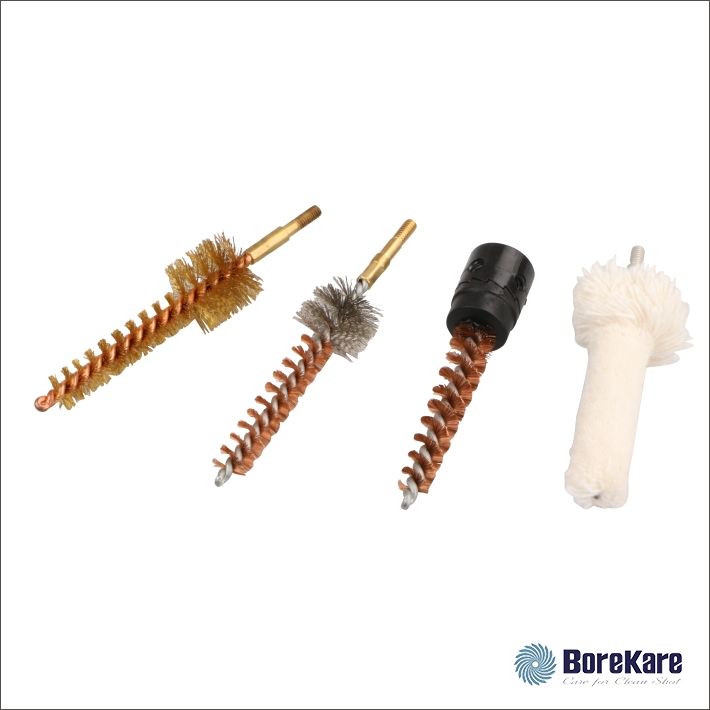
After that, soak a cleaning patch in bore solvent and adhere it to the end of your cleaning rod. The rod should then be passed through the gun's chamber. This will saturate the bore surface as well as the inside of the chamber of your pistol.
After you've done this, make sure you don't drag the rod back through the chamber. If you do, you'll wind up reintroducing any dirt you've removed to the gun's chamber.
Allow ten to fifteen minutes for this solvent to work. This will give it enough time to break down any debris that may have accumulated inside the chamber. While you're waiting, keep an eye on your gun, especially if you have youngsters in the house.
After 15 minutes, use your bore brush to clean the inside of the barrel. Then, on the end of your cleaning rod, place a fresh, dry cleaning patch and run it through the barrel until it comes out clean.
Then you can use a pull-through tool to grease the chamber. This portion of your gun should only be lubricated with a mild lubricant, not gun oil. You can use a stronger lubricant if you plan to store your gun for a long time, but you must clean it out when it comes out of storage.
Finally, polish the gun's barrel on the outside. Cleaning the barrel hood, lug, and feed ramp are all part of this process.
Cleaning and Lubricating the Action
Cleaning your gun's action needs a certain amount of precision, so review your firearm's manual before getting started. This will specify which locations in your operation require lubrication.
The slide, pump, and bolt are all part of your motion. All of these can be cleaned using a nylon utility brush and a dry cloth.
Begin by spraying these spots with a lot of action cleaner solvent. Hold the action over your drip pan while doing so. Any extra spray and debris that is washed away will be caught in this.
Allow the solvent to percolate through any debris. It normally takes about ten minutes to do this task. Then, before moving on to the next level of cleaning, let these portions of your action dry.
You don't want to over-lubricate the action, so use a needle applicator. Using too much oil might cause debris to become trapped in the action, making it unreliable.
Cleaning Magazines
Magazines are particularly crucial in semi-automatic guns. They aid in the loading of ammunition into your gun before it fires. As a result, you should spend the time to thoroughly clean them, as well as the rest of your pistol.
You'll need to examine the manufacturer's instruction manuals to do this. Because different magazines have varied cleaning requirements, this is the case. You'll also need some cleaning brushes for magazines.
Always avoid using petroleum-based chemicals or lubricants when cleaning your gun's magazines. The primers in your pistol may be damaged as a result of this. Instead, clean your magazines with solvents that leave no residue.
When it comes to cleaning up your periodicals, be cautious. You must always wear safety goggles to avoid getting dirt in your eyes.
Putting Your Gun Back Together
Before you finish, you must carefully reassemble your pistol and test it. Follow the instructions in the owner's manual for your firearm. Then, while it's being unloaded, double-check that all of the parts are functional.
Check that everything on your gun is in working order, including:
The mechanics of triggering
The safety nets are in place.
The locking mechanism and the slide operation
The magazine's shelf life
The ejection mechanisms
If any of these aren't working, you can disassemble your gun again and try to figure out what's wrong. It's possible that there's still junk in the gun or that you've overlooked a stage in the reassembling process.
Don't reload the gun when during the examination.
Wiping the Gun Down
The last thing you need to do is clean the outside of your gun once you know it's clean and in fine functioning order.
This will clear your pistol of any debris or acidic prints. It'll also look lovely and polished afterward!
Remember to clean up after yourself!
Make sure to tidy up your desk when you've finished cleaning your pistol. You should never leave your firearms or ammo unattended.
Powder residue from shots and other filth can accumulate inside your gun's action or on the barrel over time. If this residue is not removed, it will have an adverse effect on the performance of your gun. It may become untrustworthy and even unpredictable.
Cleaning your pistol on a regular basis will also ensure that the safety systems are in working order. This is why, as previously said, cleaning your pistol can lessen the danger of it inadvertently discharging. you don't want your gun's safety to fail!
Gun owners are responsible for any damages caused by your gun if it is not properly maintained or used in a hazardous manner. As a result, it's always a good idea to keep up with your gun maintenance!

How Often Should You Clean Your Gun?
Handguns, rifles, and shotguns should all be cleaned on a regular basis.
Even if your gun hasn't seen any action, you should clean it thoroughly at least once a year. This is because it may still acquire dust or rust.
If your gun sees a lot of use, it will need to be cleaned more frequently. After each usage, try to clean it, especially if you've fired many shots. So, whether you've gone out hunting or just practiced at the shooting range, you should clean your rifle thoroughly.
What Are the Requirements for Cleaning a Gun?
Make sure you have all of the necessary supplies before cleaning your pistol. Different cleaning techniques are required for different guns, but having these essentials tools on hand will always come in handy:
A cleaning rod

A caliber-specific bore brush

Caliber-specific, lint-free, and fiber-free cleaning patches

Forming-fitting and slotted cleaning jags

Utility brushes

Double-ended brushes

Preparing Your Cleaning Station
Because you want plenty of air around you while cleaning your pistol, you should do so outside or in an open garage. Indoors, though, you can work close to an open window.
Always clean your firearm on a firm surface, such as a sturdy table. In a perfect world, you'd keep your cleaning supplies away from people.
Remove live ammo from your gun cleaning area. This is one of the most critical things to do before cleaning your pistol. This involves removing all magazines from all guns and confirming that they are unloaded. Magazines and ammo should be stored properly away from your firearms.
Check the Gun’s Manual
Every gun is unique. Cleaning a bolt action rifle differs from cleaning a semi-automatic pistol, for example. So, before you start cleaning your pistol, double-check the instruction handbook.
This will show you how to securely disassemble your pistol without causing any damage to its components. It will also include instructions on which chemicals you should and should not use on your firearm. This may be determined by the material used to construct your weapon.
Cleaning the Barrel and Chamber
After you've unloaded your weapon, it's time to clean it.
Cleaning the chamber and barrel with a dry bore brush is the first step. This should be pushed in the direction of the gun's muzzle from the chamber. This loosens any metal debris left behind by your gun when you shoot it.

After that, soak a cleaning patch in bore solvent and adhere it to the end of your cleaning rod. The rod should then be passed through the gun's chamber. This will saturate the bore surface as well as the inside of the chamber of your pistol.
After you've done this, make sure you don't drag the rod back through the chamber. If you do, you'll wind up reintroducing any dirt you've removed to the gun's chamber.
Allow ten to fifteen minutes for this solvent to work. This will give it enough time to break down any debris that may have accumulated inside the chamber. While you're waiting, keep an eye on your gun, especially if you have youngsters in the house.
After 15 minutes, use your bore brush to clean the inside of the barrel. Then, on the end of your cleaning rod, place a fresh, dry cleaning patch and run it through the barrel until it comes out clean.
Then you can use a pull-through tool to grease the chamber. This portion of your gun should only be lubricated with a mild lubricant, not gun oil. You can use a stronger lubricant if you plan to store your gun for a long time, but you must clean it out when it comes out of storage.
Finally, polish the gun's barrel on the outside. Cleaning the barrel hood, lug, and feed ramp are all part of this process.
Cleaning and Lubricating the Action
Cleaning your gun's action needs a certain amount of precision, so review your firearm's manual before getting started. This will specify which locations in your operation require lubrication.
The slide, pump, and bolt are all part of your motion. All of these can be cleaned using a nylon utility brush and a dry cloth.
Begin by spraying these spots with a lot of action cleaner solvent. Hold the action over your drip pan while doing so. Any extra spray and debris that is washed away will be caught in this.
Allow the solvent to percolate through any debris. It normally takes about ten minutes to do this task. Then, before moving on to the next level of cleaning, let these portions of your action dry.
You don't want to over-lubricate the action, so use a needle applicator. Using too much oil might cause debris to become trapped in the action, making it unreliable.
Cleaning Magazines
Magazines are particularly crucial in semi-automatic guns. They aid in the loading of ammunition into your gun before it fires. As a result, you should spend the time to thoroughly clean them, as well as the rest of your pistol.
You'll need to examine the manufacturer's instruction manuals to do this. Because different magazines have varied cleaning requirements, this is the case. You'll also need some cleaning brushes for magazines.
Always avoid using petroleum-based chemicals or lubricants when cleaning your gun's magazines. The primers in your pistol may be damaged as a result of this. Instead, clean your magazines with solvents that leave no residue.
When it comes to cleaning up your periodicals, be cautious. You must always wear safety goggles to avoid getting dirt in your eyes.
Putting Your Gun Back Together
Before you finish, you must carefully reassemble your pistol and test it. Follow the instructions in the owner's manual for your firearm. Then, while it's being unloaded, double-check that all of the parts are functional.
Check that everything on your gun is in working order, including:
The mechanics of triggering
The safety nets are in place.
The locking mechanism and the slide operation
The magazine's shelf life
The ejection mechanisms
If any of these aren't working, you can disassemble your gun again and try to figure out what's wrong. It's possible that there's still junk in the gun or that you've overlooked a stage in the reassembling process.
Don't reload the gun when during the examination.
Wiping the Gun Down
The last thing you need to do is clean the outside of your gun once you know it's clean and in fine functioning order.
This will clear your pistol of any debris or acidic prints. It'll also look lovely and polished afterward!
Remember to clean up after yourself!
Make sure to tidy up your desk when you've finished cleaning your pistol. You should never leave your firearms or ammo unattended.

















